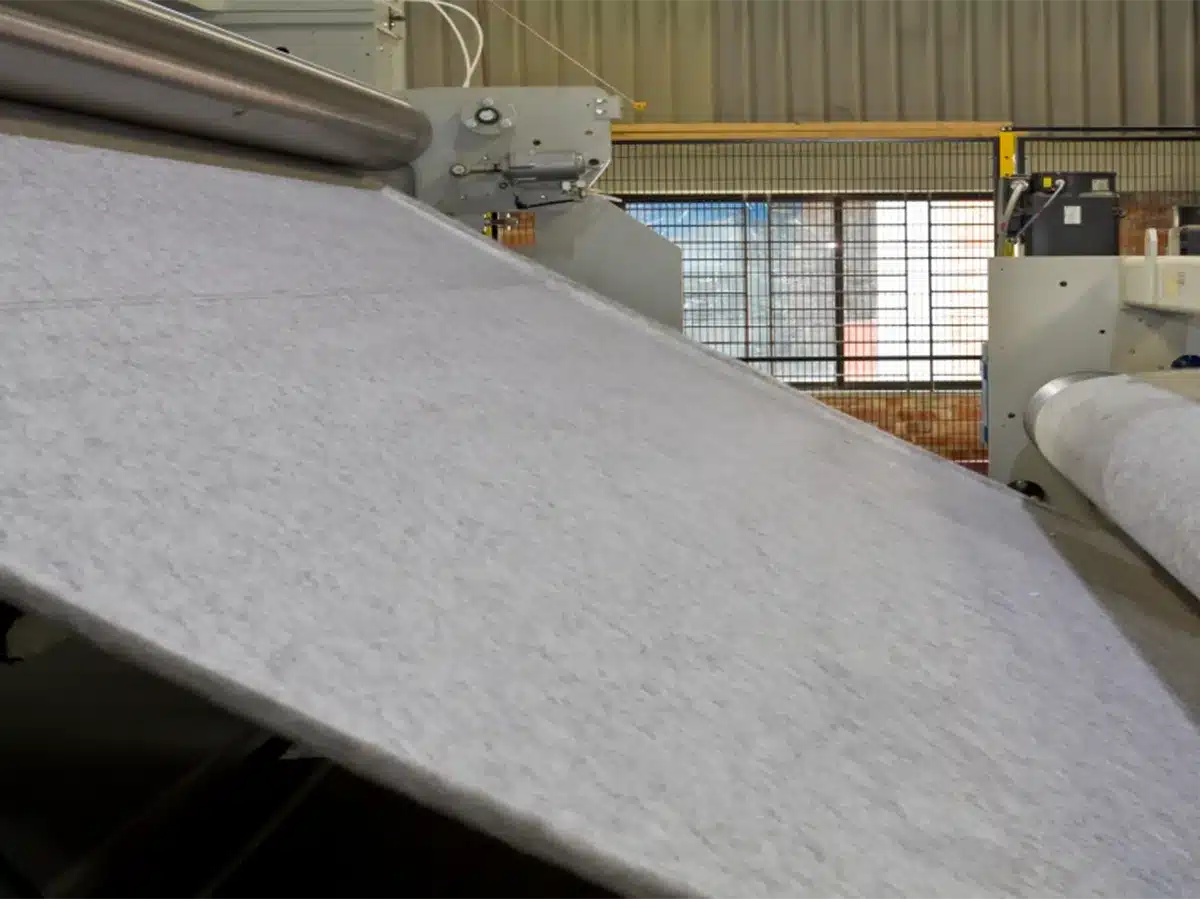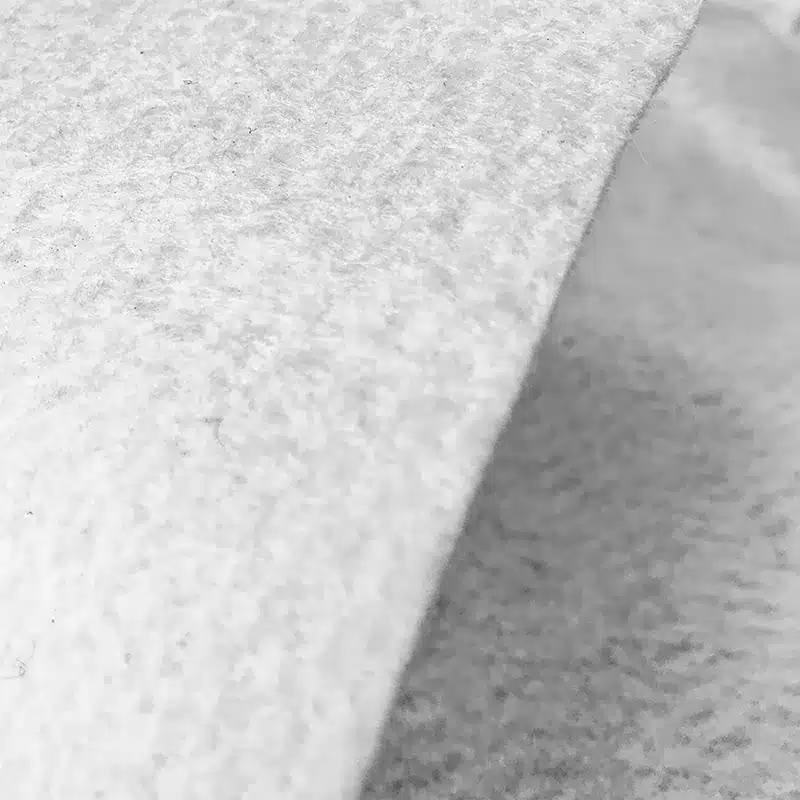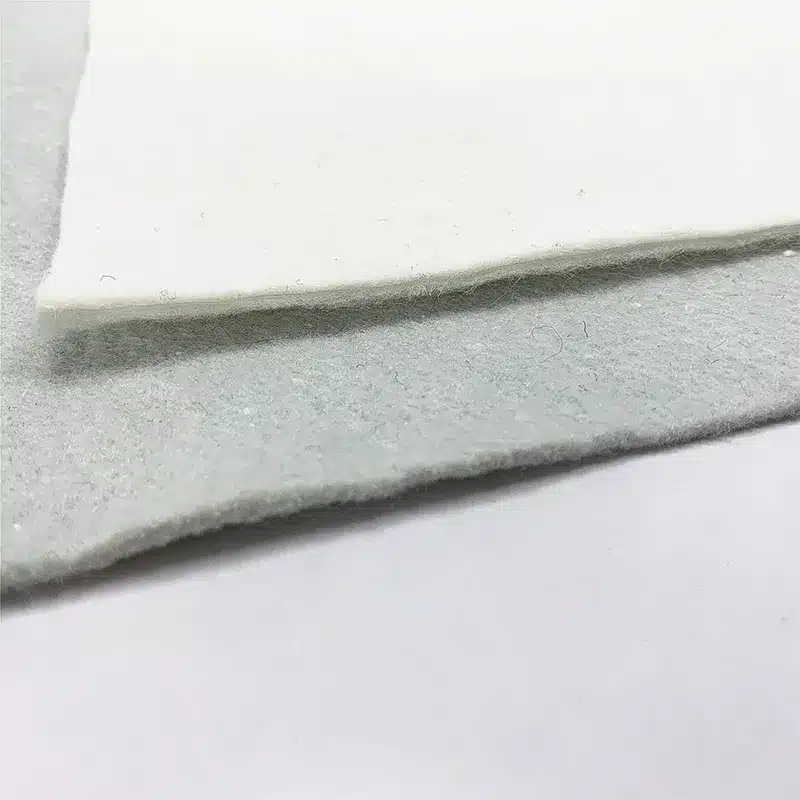+86-159 9860 6917
info@geofantex.com
geofantex@gmail.com
+86-400-8266163-44899
Geotextile fabric is a versatile material widely used for laying weed barriers in landscaping and gardening projects. In this article, we’ll provide a step-by-step guide on how to effectively lay a weed barrier using geotextile fabric, ensuring a weed-free and well-maintained outdoor space.
What is geotextile fabric?
Geotextile fabric is a synthetic or natural permeable textile material used in construction and engineering projects to enhance soil stability, improve drainage, and provide erosion control. Made from materials like polypropylene or polyester, it is designed to perform various geotechnical functions such as separation, filtration, reinforcement, and protection.
Types of Geotextile Fabrics
- Woven Geotextiles: Manufactured by weaving synthetic fibers together to create a strong, durable fabric. Best suited for applications requiring high load support and tensile strength, such as roadways and embankments.
- Non-Woven Geotextiles: Made by bonding fibers through heat or chemical treatment. Effective for drainage and filtration applications due to their permeability.
- Knitted Geotextiles: Produced through knitting processes and typically used in niche applications. Provide flexibility and can combine characteristics of woven and non-woven fabrics.
Applications of Geotextile Fabric
- Erosion Control: Prevents soil erosion on slopes, riverbanks, and coastal areas by stabilizing the ground. Often paired with vegetation or other materials to reinforce the surface.
- Soil Stabilization: Strengthens weak soil by providing a stable base for construction. Commonly used in road construction, retaining walls, and embankments.
- Drainage Systems: Acts as a filter layer in drainage systems to prevent clogging by soil particles. Used in landfills, trench drains, and sports fields.
- Separation: Prevents the mixing of different soil layers, preserving the integrity of construction. Essential in building roads, railways, and parking lots.
Benefits of Geotextile Fabric
- Durability: Enhances the lifespan of construction projects by improving soil strength and preventing degradation.
- Versatility: Usable in diverse environments, from wetlands to arid regions.
- Cost-Effectiveness: Reduces maintenance and material costs by enhancing structural integrity.
- Environmental Impact: Minimizes erosion and protects ecosystems by stabilizing terrain.
Examples of Effective Utilization
- Highway Construction: Used to stabilize subgrades and prevent cracks by distributing loads evenly. Example: Interstate highway systems in the U.S. incorporate woven geotextiles beneath asphalt layers.
- Coastal Protection: Installed to protect shorelines from wave erosion and promote sediment deposition. Example: Non-woven geotextiles in dune restoration projects.
- Agricultural Applications: Used as weed barriers and drainage aids in farming. Example: Polypropylene geotextiles in crop fields to enhance water management.
Materials and Installation Techniques
- Materials: Commonly polypropylene or polyester due to their strength, resistance to UV radiation, and flexibility.
- Installation Techniques: Ensure proper site preparation, including clearing debris. Lay geotextile fabric flat and overlap edges for seamless coverage.
This comprehensive overview provides a solid understanding of geotextile fabric, its types, and its applications.

Why choose geotextile fabric for laying a weed barrier?
Geotextile fabric is a popular choice for weed control in landscaping and gardening due to its numerous advantages over traditional methods. Here’s a detailed breakdown:
Durability
- Long-lasting: Geotextile fabrics are typically made from synthetic materials like polypropylene or polyester, ensuring they can withstand harsh environmental conditions.
- Resistance to wear and tear: They are tough and resistant to punctures, which makes them ideal for heavy-use areas.
Permeability
- Water and air flow: Unlike plastic sheets, geotextile fabrics allow water, air, and nutrients to pass through, ensuring the soil remains healthy and plants receive essential elements.
- Prevention of pooling: The permeability prevents water from pooling on the surface, reducing risks of plant root rot and erosion.
Environmental Impact
- Eco-friendly options: Some geotextile fabrics are made from biodegradable or recycled materials, reducing environmental impact.
- Soil preservation: By reducing erosion and allowing soil to breathe, they contribute positively to the overall ecosystem.
Cost-effectiveness
- Low maintenance: Geotextile fabrics reduce the frequency and cost of weeding and reapplying other forms of weed barriers.
- Reusable: Many geotextiles can be reused if properly installed and maintained.
Versatility
- Applicable in various settings: They are suitable for gardens, pathways, driveways, and even under artificial turf or gravel.
- Compatible with other landscaping elements: Geotextile fabrics work well with mulches, stones, or decorative ground covers.
Comparison to Traditional Weed Barriers
- Plastic sheeting: Plastic creates an impermeable barrier, which can harm soil health by blocking water and air.
- Organic mulch: While mulch improves soil quality, it is less effective as a long-term weed barrier compared to geotextile fabric.
- Cardboard/newspaper: These decompose quickly and require frequent replacement, increasing labor and material costs.
Key Takeaway
Choosing geotextile fabric provides a balanced solution for weed control, combining durability, soil health maintenance, and cost-efficiency while offering greater versatility than traditional methods. For sustainable landscaping, this fabric proves to be a reliable choice.
What is the step-by-step process for laying a weed barrier with geotextile fabric?
The process of laying a weed barrier with geotextile fabric involves the following steps:
- Prepare the area: Clear the area of debris, rocks, and existing vegetation.
- Measure and cut the fabric: Measure the dimensions of the area to be covered and cut the geotextile fabric to size.
- Lay the fabric: Place the fabric over the prepared soil surface, ensuring full coverage and minimal overlap.
- Secure the fabric: Use landscape staples or pins to secure the fabric to the ground, especially along the edges and seams.
- Cover with mulch or gravel: Spread a layer of mulch or gravel over the geotextile fabric to anchor it in place and provide additional weed suppression.
- Inspect and adjust: Inspect the installation to ensure the fabric is securely in place and make any necessary adjustments.
Are there any tips for successful weed barrier installation with geotextile fabric?
Yes, here are some tips for successful weed barrier installation with geotextile fabric:
- Choose the right fabric: Select a geotextile fabric with appropriate strength, permeability, and UV stability for your specific application.
- Overlap seams and edges: Overlapping seams and edges of the fabric help prevent weed growth and infiltration.
- Use quality materials: Invest in high-quality landscape staples or pins to ensure the fabric remains securely in place.
- Monitor and maintain: Periodically check the weed barrier for signs of damage or weed growth and make repairs as needed to maintain effectiveness.
Laying a weed barrier with geotextile fabric is a practical and effective solution for controlling weeds in landscaping and gardening projects. By following the step-by-step guide and implementing the provided tips, you can create a durable and long-lasting weed barrier that enhances the beauty and functionality of your outdoor space while minimizing maintenance efforts.



Get Free Sample
We’ll respond as soon as possible(within 12 hours)






















